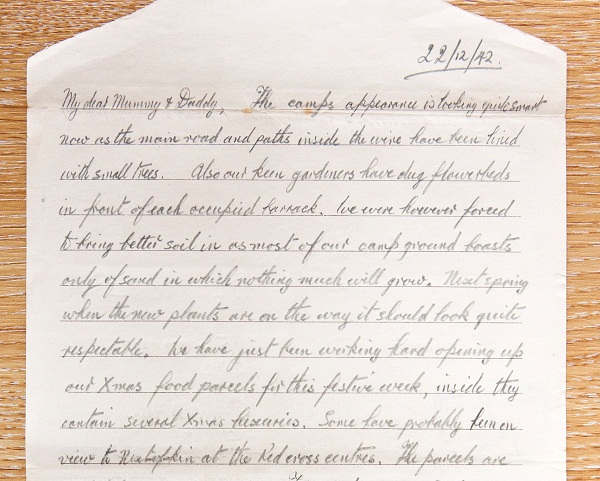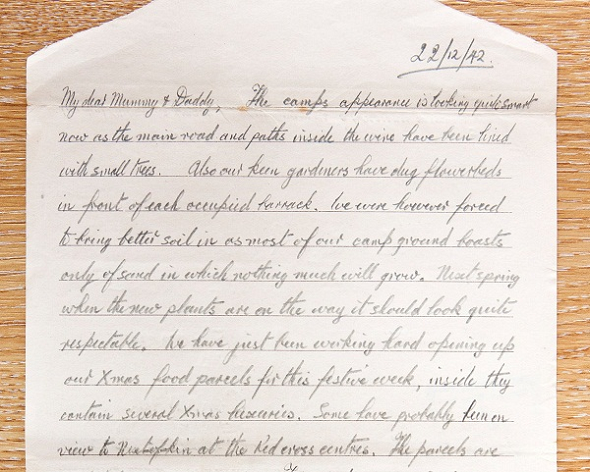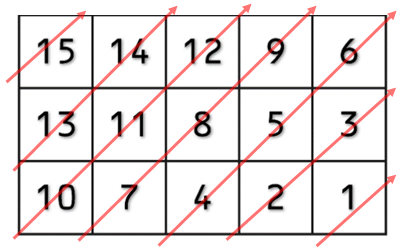Finally, we make this text look like a letter:
Dear Mary,
on Tuesday, weather was cold.
Noon brought cold rain, which got worse by late afternoon. In Switzerland, temperatures are much higher. They will reach more than twenty to twenty twodegrees tomorrow, which certainly is quite hot. Our goal is to stay warm for another 8 days, because here at the camp coal will come next Monday or at least next Tuesday. I really wish I could now escape from this weather. Plan to write again on the next WE.
Sincerely
John
An authentic example
The following is an authentic message encoded and sent by British soldier John Pryor from a German PoW camp in the Second World War (he used a 5-4-5-4-5… pattern; as an additional rule, after the word “the”, letters instead of words count for the rest of the pragraph):
My Dear Mummy & Daddy,
Last week [4×4 = 16] I received a short letter from Robert.
The envelope had the marks [5] of five of the [9 after the word “the” letters, not words count] RAF censors. I can’t imagine what his new number on the envelope means, maybe he has been turned over to rather different occupations, which of course I can’t know anything about.
I am glad the information [5] I sent you, especially [9] about the Uffa Fox and [13] other books of the [18 after the word “the” letters, not words count] sailing variety, reached you. As regards other possible books, my present desires seem mostly for interesting literature of events in our country’s history. A subject I am unfortunately very weak in.

The “Naked Security” competition
In 2013, online IT security magazine Naked Security held a competition, the participants of which had to encode a message the way I explained it. The words had to be dropped in a 4-5-4-5… pattern. The following message had to be hidden in a cover letter:
INCREASED RAILWAY MOVEMENTS WITH 24 HOUR ARTILLERY AND AIR COVER, GUARD DOUBLED, BUNGALOWS SEARCHED DAILY
This message consists of 15 words. The following order had to be used (without indicating it in the first line):
The following cover letter won the first prize:
I thank God DAILY for your patiance. I’ve SEARCHED for many houses. DOUBLED my efforts and the AIR turned blue one HOUR after we were badly gazumped. BUNGALOWS are really rubbish. GUARD our deposit with care AND I am sure 24 hours will show us MOVEMENTS in the market. COVER your ears until then – ARTILLERY Road is expensive WITH no garage and the RAILWAY use is now INCREASED.
In the Naked Security article you will find a few more cover letters that were submitted to the competition. All in all, this steganographic method appears to work quite well. As it seems, the plan of the British crypto specialists to provide their soldiers a powerful means for secret communications was successful.
If a reader can produce an even better cover letter for the message that was to be hidden in the competition, please let me know.
Follow @KlausSchmeh
Further reading: Als die Briten Geheimbotschaften für Kriegsgefangene im Monopoly-Spiel versteckten
Linkedin: https://www.linkedin.com/groups/13501820
Facebook: https://www.facebook.com/groups/763282653806483/




Kommentare (4)